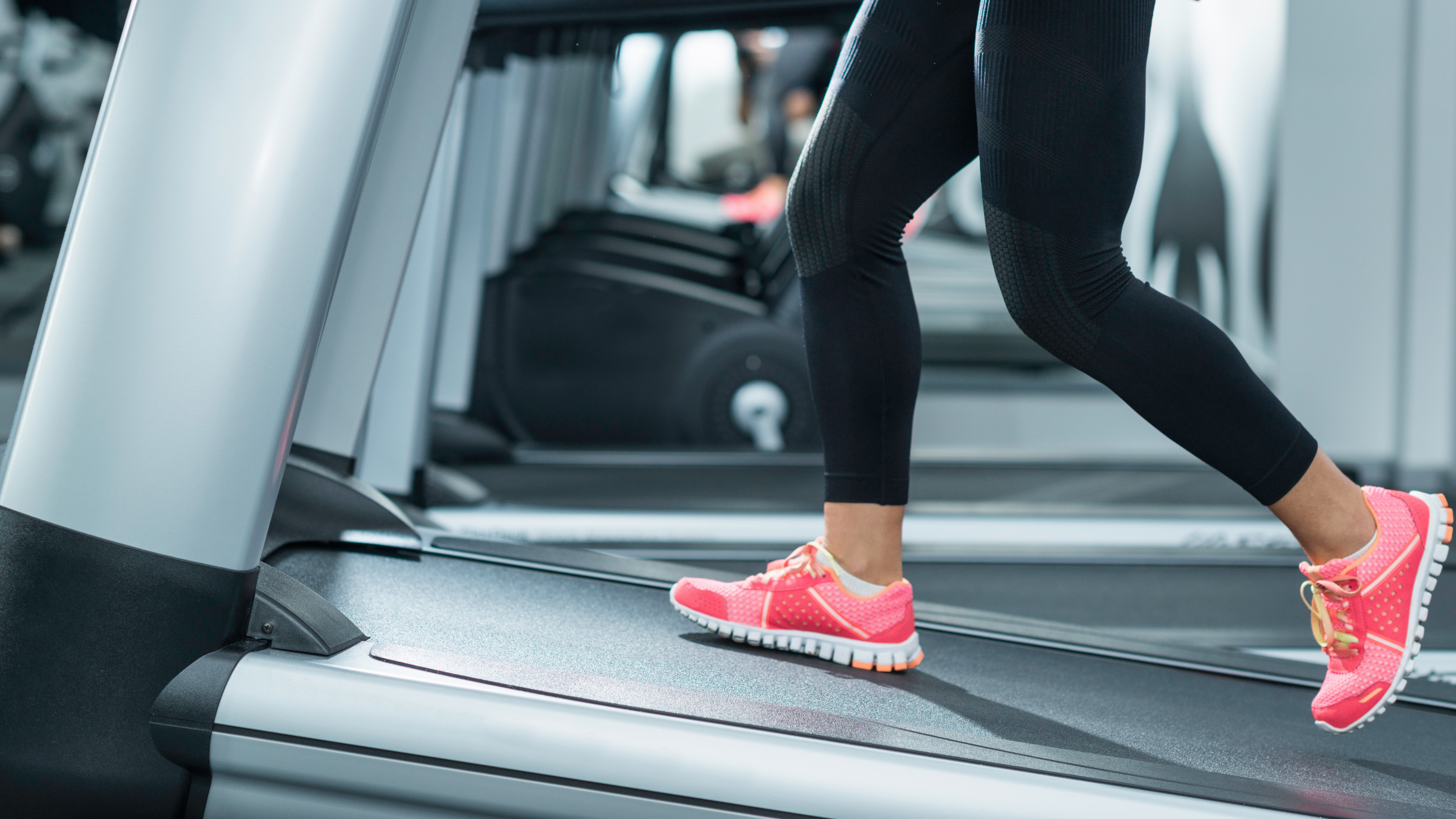
We’re a big fan of the farmer’s walk at Tom’s Guide, but have you done the treadmill farmer’s walk before? If you want to work muscles harder and add cardio interval training to the full-body exercise, just add a treadmill.
The farmer’s walk exercise can work in any strength and conditioning program and simply involves walking with weights. The move could help build stamina, boost your cardiovascular fitness and strengthen muscle groups all over.
Below, we cover how to do the treadmill farmer’s walk, the benefits, some common mistakes and variations we recommend trying. You only need a set of dumbbells, the best kettlebells, or even your groceries to do it.
Treadmill farmer’s walk: Benefits
The move hits the shoulders (your deltoids), arms, back, chest, core, hip flexors, glutes and legs. Not many muscles remain inactive while walking with weights, and you just need to grip a kettlebell (or similar) in each hand and take a walk.
So what happens when you add a treadmill into proceedings? The treadmill adds an element of control to the farmer’s walk, allowing you to play with speed, interval training, incline and decline settings. If you have limited space, you can also walk for further distances or time, which is ideal during home workouts.
The treadmill allows you to target muscles differently, too. On an incline, your hamstrings play a greater role along with the posterior chain muscles like your lower back, glutes and calves. On the decline, your knee extensors and quads are more dominant, alongside the stabilizer muscles that help control the descent. Depending on the capabilities of your treadmill, you can pretty much replicate a hike while holding weights.
If you haven’t tried the exercise before, scale to a lighter weight if you’re a beginner or prefer to walk at speed for cardio gains or lift heavier for strength training.
Get instant access to breaking news, the hottest reviews, great deals and helpful tips.
Treadmill or no treadmill, the farmer’s walk is pretty much the definition of functional training and compound exercise, meaning you’ll hit a bunch of muscles at once and strengthen the movement patterns and posture responsible for executing daily activities like walking while carrying something — a bag or groceries, for example. And if you enjoy isometric and isotonic exercise, you get both during the farmer’s walk — your shoulders and core are activated without lengthening or shortening (isometric contraction), while your legs drive physical movement (isotonic contraction).
Recently, I did the farmer’s walk every day for a week — here’s what happened.
How to do the treadmill farmer's walk
Here’s how:
- Stand on your treadmill and hold two kettlebells (or similar) in each hand
- Brace your core and set both shoulders down, creating a strong pillar with your body
- Hit a percentage incline or decline (if you have those settings) depending on your preference
- Aim for 2-4 mph and begin walking with control, keeping your stomach braced without rounding your back.
Farmer's walk: Common mistakes
Tucking the pelvis
Rounding the upper back and tucking the pelvis under are common mistakes when someone struggles with the load. In this instance, we recommend scaling down on weight and focusing on keeping your spine long. Imagine someone is pulling a piece of string from the crown of your head as you walk.
Slumping shoulders
The farmer’s walk torches the shoulder muscles and tests your forearm and grip strength, so when those muscles begin to fatigue, the shoulders can start rounding — known as internal rotation. Sedentary lifestyles also contribute toward internal rotation, which can cause tight chest muscles and weak back muscles. Keep your shoulders set down and open your chest, encouraging good posture while you walk with weights.
Overleaning
If you enjoy unilateral training (holding a weight on one side), the temptation to lean to one side will be hard to resist as you tire. Stabilize your hips and avoid dragging the weight on the loaded side by resisting rotation or side-bending. Keep your chest up, and decrease the weight if you need to.
Farmer's walk: Variations to try
Give these a go.
Incline treadmill farmer’s walk
Hit the incline on your treadmill and begin climbing uphill. Avoid excessively leaning forward and drive up through your core as the legs burn. The variation torches the hamstrings and ramps the heart rate while building strength and burning calories.
Decline treadmill farmer’s walk
Alternatively, opt for a decline to switch the emphasis to your quads and front load your body. Your body must work hard to control the descent, which activates your stabilizer muscles, including your core, hip flexors and glutes. Avoid leaning forward and move with control.
Backward treadmill farmer’s walk
As an extra challenge, try turning around and walking backward with weights. Walking backward helps activate the glutes and build joint stability, reducing the pressure on your knees. You could do this on an incline or decline if you’re feeling confident.
Single-arm kettlebell treadmill farmer’s walk
Walking with weights unilaterally (single-sided) helps improve coordination and balance and strengthens both sides of the body independently. Avoid excessive leaning if you opt for this method, and pick a weight that both sides of your body can cope with.
Verdict
As you age, building strong and healthy bones, joints and muscles becomes paramount to counteract age-related conditions like osteoporosis and muscle atrophy. The farmer’s walk helps load the bones and muscles to strengthen. When your bones are met with stress, they respond by adding mass — a process called bone loading.
To program the treadmill farmer’s walk, opt for a number of steps or set distance or time. Try several sets, and if your goal is to accumulate time or distance, take rest breaks to recover and reset. If working with a partner, work on a you-go-I-go basis, adding the farmer’s hold (holding the weights in a non-moving standing position) for the person not using the treadmill. You can practice moving between isometric (non-moving) and isotonic (moving) exercises while building strength all over.
More from Tom's Guide
- I ran 5K with the Apple Watch Series 7 and Garmin Vivoactive 5, and the results surprised me
- Forget Russian twists, 5 standing ab exercises that sculpt your core with one kettlebell
- Farmer's walk: How to do it and the benefits of walking with weights

Sam Hopes is a level 3 qualified trainer, a level 2 Reiki practitioner and fitness editor at Tom's Guide. She is also currently undertaking her Yoga For Athletes training course.
Sam has written for various fitness brands and websites over the years and has experience across brands at Future, such as Live Science, Fit&Well, Coach, and T3.
Having coached at fitness studios like F45 and Virgin Active and personal trained, Sam now primarily teaches outdoor bootcamps, bodyweight, calisthenics and kettlebells.
She also coaches mobility and flexibility classes several times a week and believes that true strength comes from a holistic approach to training your body.
Sam has completed two mixed doubles Hyrox competitions in London and the Netherlands and finished her first doubles attempt in 1:11.

